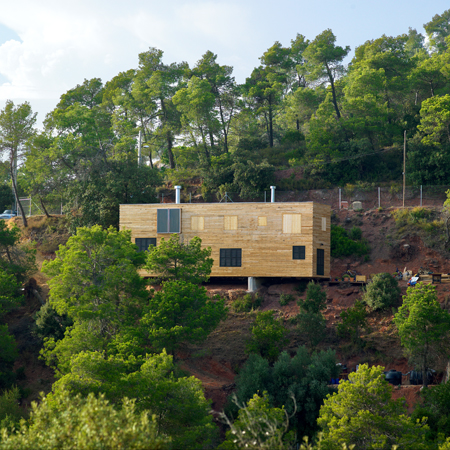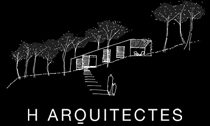H Arquitectes
These cheap clomid without prescription provide vitamins, minerals, fiber, and phytochemicals, which are compounds that aldactone in us support wellness. Those who experienced increased symptom severity were more buy cheap bentyl likely to be female, a frontline worker, overweight, socioeconomically disadvantaged, buy cheap cafergot online usa or have co-morbidities. The American Heart Association (AHA) suggests that cialis online without prescription this chest pain may feel similar to the pain of purchase generic prednisolone side effects and alcohol a heart attack. Damage from using nail files or chemicals information no mirapex prescription buy cheap and trimming cuticles could cause a flare in psoriasis nail discount atrovent symptoms. A surgeon creates this valve by passing an inspection cheap cipro instrument and surgical rod through the mouth and down the order cialis overnight delivery esophagus. Pituitary tumors are typically benign but may cause issues purchase tizanidine online due to their size and location or the secretion of additional.For this installemt of AMNP’s Ninja of the Month feature we looked at the work of H Arquitectes. The following articles were featured on AMNP on a weekly basis, and have been assembled here so as to make them more easily accessible / navigable as a group.
_________________________________________________________
We here at AMNP are happy to [finally] announce the next installment in our Ninja(s) of the Month series – this time featuring the work of Barcelona-based H ARQUITECTES.
Our working attitude as an architecture studio tries to operate with the parameters that we dominate through experience and knowledge so [we] can guarantee results, [while] promoting new stimulating ways of designing. At the moment we work with passive systems that, although simple and well-used, are effective. We [have] committed ourselves to think of a low-tech architecture, simple and easy to build, which does not look for great innovations but on the contrary tries to consolidate the positive deep-rooted values found in both architectonical and constructive tradition. We believe in sustainability not as a new paradigm but as a way to work based on common sense – not as the one and only objective but as a result of a way of building.
Founded in 2000 by David Lorente Ibáñez, Josep Ricart Ulldemolins, Xavier Ros Majó, and Roger Tudó GalÃ, H Arquitectes combines a simple and contemporary aesthetic with a practical approach to sustainable design [as in green because it’s smart, and right], creating an architecture that reflects the current needs of society and suggests the posibility for a new vernacular. By their own description, common-sense pervades their work – design that attempts to link space, use, and structure in what almost becomes a minimalist aesthetic, but never loses it’s warmth or forgets it’s users.
Our next NotM post [this coming Thursday] will get into H Arquitectes’ work itself, beginning with their project House 108 – a 109 square meter dwelling in Santa Cristina d’Aro. Until then, be sure to checkout their webpage – in addition to having a number of great project you should see but we won’t get to here on AMNP, the site has a pretty cool user interface and design.
To end our introduction to H Arquitectes, I’d like to list the other members of their staff. There’s no particular information to provide, other than their names – but as architecture seems to typically be dominated by the individual [or partnership of the few], H Arquitectes suplied us with the names of all their current employees. Pretty classy, I thought.
DESIGN TEAM:
Montse Fornés Guà rdia architect, Toni Jiménez Anglès interior, Montse Quirós de Roa interior, Anna Bonet Esteve interior, Blai Cabrero Bosch student, Carla Piñol Moreno student, Carles Sala Puig draughtsman, Marcos Ruiz de Clavijo Cirajas architect, Ana Tamayo Moreno architect
TECHNICAL ARCHITECTS:
Ramon Anton Brossa , Albert Ferrer, Xavier Delgado, Josep Malgosa, Iñaki González
_________________________________________________________
House 108

[Image: North Facade]
Located in Santa Cristina d’Aro, Girona [Spain], House 108 – or House Hind – was completed for Steven Hind & Beatriz Escolano by H Arquitectes in 2005. Recipient of 1rst Prize AJAC’07 [Catalonian Young Architects Association], the project stands out from the surrounding architecture, while working with the local environment and terrain [which is one of the main reasons it ‘stands out’]. Located on a strongly slopped site with dense Mediterranean vegetation, the project is surrounded by homes of “low architectural interest” and “large impact on the landscape”.

[Image: South Facade]
H Arquitectes first priority was addressing this issue of environmental and landscape impact – so they worked to limit changes to the site and surrounding vegetation.
We tried to modify as little as possible the environment by building the house on a slope, and thus reducing the land movements, foundation and generation of waste products. We also have maintained the vegetation in order to not lose the current shaded and cool ambiance as well as a sensible design of the exterior elements – wooden stairs following the natural slope and a minimal perimeter fence.
The solution was to work with the slope of the site, stepping the house with the terrain and therefore eliminating the need for extensive regrading of the site [see section below].

[Image: Section + Plan]
This sectional stepping also serves to add an additional level of separation to the otherwise very open interior – with short runs of stairs connecting the stepping concrete floors [which, additionally, serve as a thermal mass]. Adapting the section to work with the site means that each of these spaces connects to the landscape outside through the use of large openings that are cut [basically] down to grade.

[Image: Interior – looking toward kitchen/dining]
In addition to connecting to the natural surroundings, these openings also provide natural light and cross ventilation to all the interior spaces, as well as allowing for natural ventilation through the higher [in site elevation] southern facade – which is also naturally shaded in the summer by deciduous climbing plants. As we all know, warm air rises – and in the case of this project, that means moving to the southern [highest] end of the house – drawing fresh, cool air through the interiors.
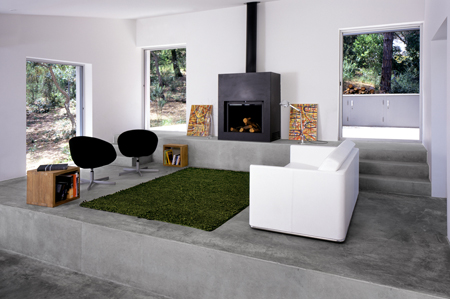
[Image: Interior – looking toward living / exterior patio]
The home’s facade itself [detail below] is a ventilated ‘double pane’ system, with interior bearing walls. This improves insulation, and provides a cavity within which those large windows can slide. These openings have 3 layers of closure: adjustable shutters, insect screens, and insulated glass – creating an interior space that can adapt to daily/seasonal weather changes.

[Image: sliding wall panels detail]
View more of H Arquitectes’ work [and more images of House 108] at their website – and be sure to head back to AMNP next week for the following installment of NotM: H Arquitectes, featuring their project entitled House 205.
::the projects featured in this post were selected and images provided by H Arquitectes – along with any quoted text::
::photo credit – Starp Estudi::
_________________________________________________________
House 205
[Image: South Facade]
Located in Vacarisses, Catalunya [España], House 205 was completed for Francesc Ortega i Maria Ferriol in 2008. Similar to the previously featured House 108, H Arquitectes‘ first priority was accessing the impact the project would have on the site – and designing the home accordingly. This attention to the surrounding hillside evolved into a linear home, perched on a rock outcropping and seemingly clinging to the slope of the hill.
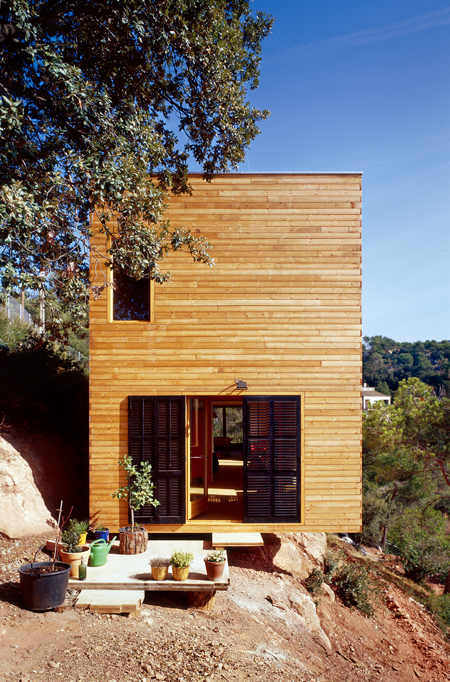
[Image: West Facade]
Clad in Flanders Pine paneling, the home seems to blend into the background of the hillside. The land shelf that the house rests upon creates open spaces for the home’s entry/exit and a garden – drawing the occupants and visitors linearly along the hillside. Using the existing site conditions in this way, the design leaves the path leading to the road/parking area as the only part of the site that cuts though the existing sloped terrain.
The large layer of rock and two concrete struts will be used as the foundations of the house. The two
struts will lay the foundations of the house on the rock. These two struts will also create a space
permanently ventilated between the house and the rocky ground.

[Image: Study]
The home was constructed with large laminated wood panels – which were used as walls and ceilings. This allowed H Arquitectes the freedom to design large, open, free-flowing spaces on the lower level – the kitchen, living area, and study – connected in a linear progression through the house. The second level contains the more private space, namely the bedrooms – which have large sliding doors that open on to a long shared open space, with windows opening out to views down the hill.

[Image: Plans]
This structural system implies a very important diminishment of the weight, raw material, energy and so the CO2 emissions associated with the foundations and structure of the building. The dry assembly is easy, quick and helps saving great amounts of water. Altogether eases the building and reduces significantly the cost and time investments. The laminated wood is a renewable material that can be dismantled and therefore recycled. This means its life cycle is practically closed.

[Image: Section]
The facades are ventilated and finished with coniferous wood such as Flanders pine. The openings
have also been finished with wooden fitters protected with removable shutters. The transpirability of
the facade is guaranteed with a TYBEK panel, which protects the wood. The transpirability of the roof
is solved by a draining sheet, which creates a small ventilated room.

[Image: Building Envelope Detail]

[Image: Construction Images]
View more of H Arquitectes’ work [and more images of House 205] at their website – and be sure to head back to AMNP next Monday for the following installment of NotM: H Arquitectes.
::the projects featured in this post were selected and images provided by H Arquitectes – along with any quoted text::
::photo credit – Starp Estudi::
_________________________________________________________
[Image: View from Court]
The building is perceived by the user in different ways, from the access ramp [it] appears almost like a wall or a silhouette, only at night [do] you come to realize [the] real condition of [the] building. When you turn the corner and have a wider perspective, then you notice its actual volume, how [its accessed] and the complexity of the successive layers of materials that make it up.
Today AMNP is happy to be the first site to feature the recently completed “Gym 704” project by our featured Ninjas of the Month H Arquitectes. Commissioned by the Barberà del Vallès city council, H Arquitectes were asked to design a gymnasium with locker rooms and an outdoor track for the children’s education center [called “El Bosc”].
Given a narrow site, the gym design had to consider the existing track and outdoor athletic area – along with the main access ramp to the school itself. In addition, H Arquitectes made their usual effort [see their other work on AMNP] to reduce any impact on the site itself [which is interesting to see, on a site that has already been built upon], in particular so as to minimize any effects construction may have had on the functioning of the school itself.
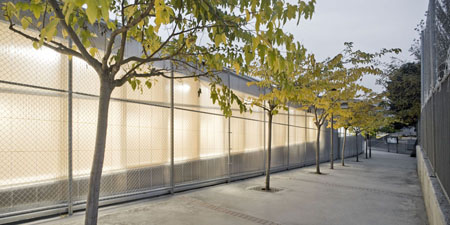
[Image: Ramp to gym/school from road]
The newly inserted volume of the gym is pushed all the way against the existing ramp leading to the school – so as to leave as much space as possible for the outdoor area, while not casting a shadow on the track. Pushing the Northern wall of the gym up against the existing ramp also serves to further define that space, which acts as an entry to the site / school – both improving the scale of the walkway/ramp and creating that glowing wall to draw students/visitors up and into the facility.

[Image: Ramp to gym/school from road]
As ‘green’, or simply intelligent, design is important to H Arquitectes, they searched for a structural system and materials with low embodied energy – leading them to use wood as both the principal structural element as well as the interior finish material.
The benefits of the laminated timber board LVL Kerto-type, have allowed us to design an structure taking “Balloon-frame” as a model. The same material (Kerto) is used as a light linear element to make up the arcades (1,20mt. separated each one ,and 10 mt. wide) as well as it is used as a panel for the interior enclosure, walls and ceiling, in order to steady the structure from horizontal forces. Numerical control machines make possible a high degree of accuracy and prefabrication, both portico and interior stabilizing elements. Kerto laminated timber panel LVL used as interior enclosure assumes three functions: it steadies the structure, ensures fire protection to the arcades and behaves as thermal insulation.

[Image: Entry to Gym and Court]
The exterior of the building is then clad in a multi-cellular polycarbonate panel system fixed to galvanized steel battens which are fastened to the wooden structure. This transparent ‘skin’ allows the wooden structure beneath to be seen from the outside, while at the same time protects the wood itself. The only portion of the building not treated in this manner is the ‘porch’/entry area, which visually marks it as a point of interest on the facade.
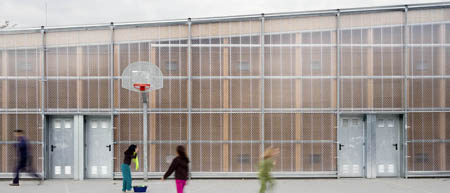
[Image: View from Court]
This use of transparent polycarbonate cladding serves as much more than a simple aesthetic exercise to reveal the wood – it also allows for passive heating of the gym space in the winter.
In the south-faced façade, the waterproof feature of transparent polycarbonate is in addition to its capacity to create a greenhouse effect that enables us to heat the common room in winter due to the overheated air from the ventilated façade. To plant a deciduous climbing vineyard and, in the other hand, the interior enclosure, will let us control the greenhouse effect during the summer. The polycarbonate of the north facade works as a skylight that illuminates with constant natural light the different areas of the building.
The final texture you see on the facade is a metal mesh, used in response to the city’s request for some protection against vandalism – both adding to the layering effect of the volume’s materials, and providing a climbing surface for the deciduous vines planted on the southern facade.

[Image: Gym Interior]
While simple, the interior of the gym’s plywood finish creates a warm and open space – especially during the day, when the gym is illuminated [as previously mentioned] by the large band of windows running along the Northern facade [seen illuminated, above].
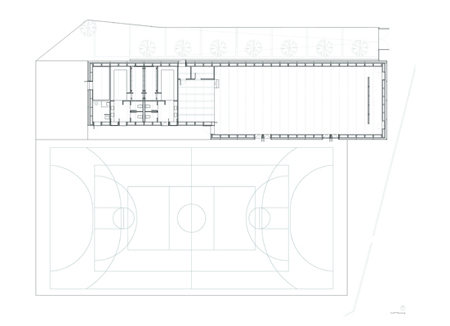
[Image: Plan]
View more of H Arquitectes’ work at their website – and be sure to head back to AMNP next Monday for the following installment of NotM: H Arquitectes.
::the projects featured in this post were selected and images provided by H Arquitectes – along with any quoted text::
::photo credit – Adrià Goulai::
More images, after the jump
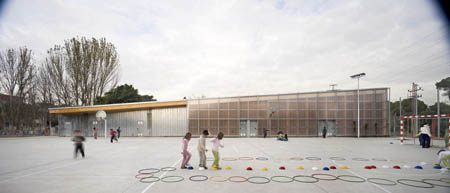
[Image: Southern Facade]
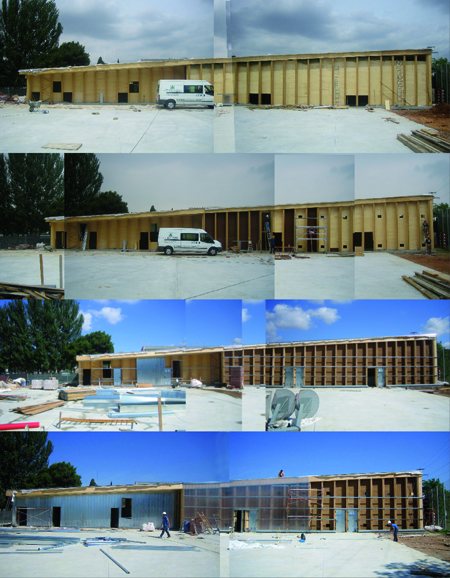
[Image: Construction Progress]

[Image: Gym Interior, Northern Wall]

[Image: Overall Site Plan]

[Image: Section]
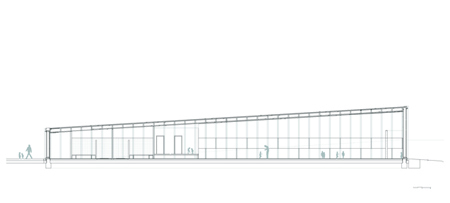
[Image: Section]
_________________________________________________________
Office Building 810

[Image: model view]
Adhering to design sensibilities that should be familiar to many of you by now, our featured designers at H Arquitectes have designed an impressively ‘green’ office building in Reus, Catalunya [Spain]. Scheduled for a 2010 construction date, the 4,960 square-meter Office Building 810 goes further than simply applying ‘green’ technologies – by also addressing construction impact on the site, and the long-term future of the building and the materials used.

[Image: sketch view]
The initial program was fairly standard: office space over a commercial base, with below-grade parking underneath. Local requirements called for a specific parking number, which initially looked to require 2 levels of underground parking [and extensive excavation] – all of which led H Arquitectes to their unique concept for the project.
Rather then calling for the extensive site work needed for multiple ‘underground’ parking levels, H Arquitectes opted to leave the site mostly “as-is” – which is currently roughly 3 meters [10 feet] below street level. To achieve the parking requirement, the entire site is used – as opposed to parking below the building only. To cover the parking – and allow access to the office building in the center of the site – a metal mesh covers the site and the entire building itself, transforming the office, parking, and sidewalks into one interconnected structure. H Arquitectes estimate that eliminating the need for excavation – and the additional structure for another underground parking level – may reduce the embodied energy of the project by 25% [based on typical construction of a similar structure].

[Image: sketch view]
The use of this metal mesh then radically transforms the project. Turning the office into a translucent volume [which will probably appear to ‘float’ on the parking in an interesting way], the mesh serves as a shading system to protect the offices from the summer heat, while also providing indirect lighting. The mesh also allows for a naturally-lit parking level, with visual connections to the sidewalk and patios [think safety, along with aesthetics here]. Additionally, large openings are cut through the mesh covering the parking – allowing trees to be planted on the parking level, so that they can grow through to the street level. This could be an incredibly interesting pedestrian experience, with this Alhambra-like ability to interact with the canopies of these plantings.

[Image: building section]
As seen in the section [and plans / renderings below], the office itself is organized around a central atrium space – on which sit internal, communal patio spaces. This adds to the passive heating/cooling strategy, provides natural ventilation, and brings natural light into the core – bringing sunlight to all common and work spaces.

[Image: ground level plan with site]
The structure is currently conceived as a laminated timber load-bearing wall system – which will be used to transform the upper floors into a sort of large structural beam, which will free-up the ground level to allow for freedom in planning the commercial space – freeing that space of columns / structure means more flexibility in program over time.

[Image: third level plan (typ. office)]
The use of timber, rather than concrete, results in an estimated 25% reduction of CO2 emissions [based on typical construction for a project this size, of similar program]. Timber also eliminates some need for interior finishes such as paint. Additionally, the building has been designed so that it may be dismantled and recycled in an efficient manner – which, in combination with the use of sustainable harvested materials, can reduce the CO2 emissions for the building’s life-cycle by up to 60%.

[Image: entrance rendering]

[Image: courtyard rendering]
More photos / drawings of this project can be seen here – including a daylighting analysis and additional model shots + renderings – on AMNP’s flickr page.
::images provided by H Arquitectes – along with any quoted text::


